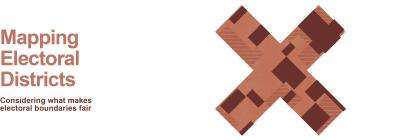
At a glance
In this activity, students
- consider the concept of fairness and map electoral boundaries on an imaginary country, making their electoral districts as fair as possible;
- interpret maps and analyze demographic and geographic information to consider the distinction between equality and equity; and
- learn about the real process for determining federal electoral districts in Canada.
Big ideas: Elections are place-based and land-based. People vote for a representative in a particular electoral district. In order for elections to be fair, careful consideration is given to both human and physical geography in determining the boundaries of electoral districts.
Subjects: This activity can be taught in a geography, world issues, social studies, or civics class. To view a list of courses associated with this learning resource, please visit our Curriculum Connections page.
Level: Secondary
Time needed: 60 minutes
Last updated: March 2019
This educational resource was created in collaboration with the Royal Canadian Geographical Society and Canadian Geographic Education.
Additional information
This resource references 338 federal electoral districts. There are now 343, as new boundaries and electoral districts came into effect at the 2025 election.
To learn more about the federal redistribution process, check out our student FAQ and Election Canada’s web page on the Redistribution of Federal Electoral Districts 2022.

